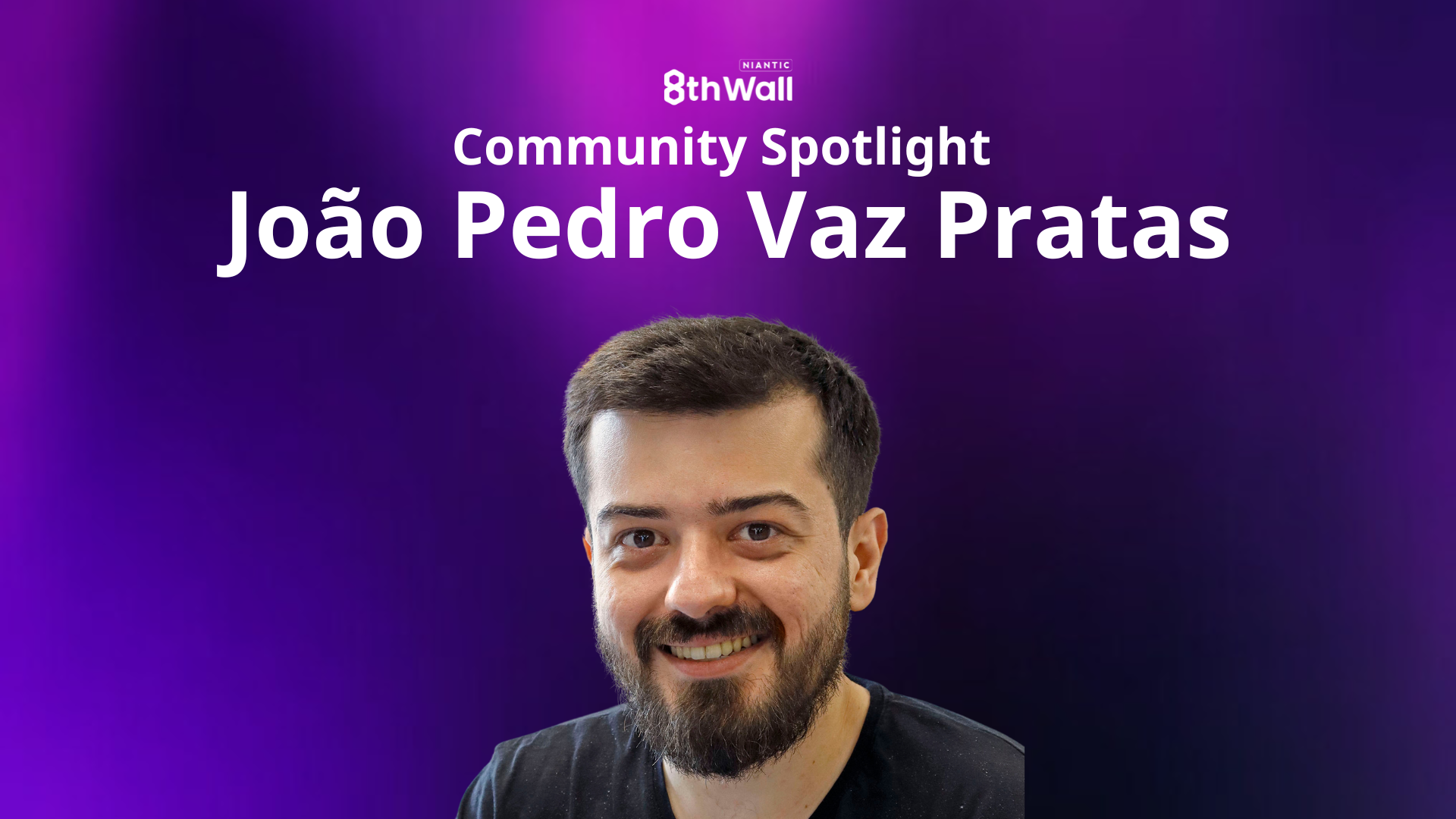8th Wall Blog
Community Spotlight: Meet João Pedro Vaz Pratas
Joao is a creative developer designing compelling real-world WebAR experiences

Meet João Pedro Vaz Pratas, a dynamic Creative Developer at Darabase, who began his journey in augmented reality development with 8th Wall around four years ago during the first COVID lockdown in the UK. His expertise in JavaScript development, particularly in the realm of WebXR development using React, TypeScript, and three.js (with AFRAME or pure three.js), has positioned him as a leader in creating immersive AR experiences that seamlessly integrate with real-world contexts.
We sat down with Joao for a Q&A to delve deeper into his AR journey and explore how he's using 8th Wall to craft captivating experiences that resonate with audiences worldwide.
How were you introduced to 8th Wall?
I first dipped my toes into the world of 8th Wall development about four years ago, right as I embarked on a new chapter with Eyekandy in March 2020. The timing was quite memorable—it coincided with the onset of the first COVID lockdown in the UK.
What would you say is your area of expertise?
My area of expertise is definitely Javascript development with a focus on WebXR Development, predominantly around React, Typescript, and three.js (either with AFRAME or just pure three.js).
How do web-based capabilities help you bring AR to the real world?
Having a web layer in the way AR functions is crucial for the end customer, especially for experiences associated with landmarks. In essence, this means that you can leverage the full potential of AR in the real world through a web browser rather than requiring an app download. For instance, if you have an AR experience set up in a museum or a zoo, most visitors will likely prefer not to download an app. This reluctance often stems from the inconvenience of permanently installing an app, which occupies space on their devices. Additionally, for tourists, there is the potential issue of the app not being available in their home country's app store. This is why having tools like 8th Wall is so important and beneficial. These tools allow us to deliver the same type of engaging and beautifully crafted content directly through the web, which remains accessible in the browser and disappears once the user closes the tab.
What are your future goals with AR?
Undoubtedly, my primary goal is to help people understand that AR is here to stay and has tremendous potential to assist us. Whether you're trying to comprehend how a product functions or simply want to learn more about something, placing this content within a user's space via a camera can significantly enhance their understanding. This is because the content becomes an interactive, living element through the camera, which helps the user assimilate information more effectively. This interactive nature is why AR experiences often have lengthy engagement times. It’s not just because something animated appears, but because it appears within the context of the user's own environment, making it more relatable.
I find the Lightship Visual Positioning System (VPS) and Absolute Scale features to be crucial for these applications. VPS can provide users with specific information about a place while they are physically present there. Additionally, when learning about a product, it allows users to see the product in true scale within their actual space, helping to determine if it will fit within the intended area. This approach not only serves the concept you're aiming to demonstrate but also enhances the contextual relevance when you connect this content to a real-world location.
What’s a recent project that left you feeling inspired?
One of my recent projects, the Malfy Gin brand engagement experience, invites users to tailor their perfect Malfy moment and then transports them into a 360-degree animated world, enriching their senses with the quintessential sights and sounds of Malfy's signature getaways. This experience was developed using both 8th Wall with AFRAME and pure AFRAME for the final scene. In the AR scenario, we present the user with two key choices: first, selecting the ideal setting for enjoying their drink, and second, choosing the flavor they'd like to try. After these selections, users can take a selfie which then transitions them to a fully realized AFRAME scene reflective of their preferences. At this point, they have the option to share the selfie, which includes overlays based on their earlier selections, adding a personalized touch to their experience. For a real test of this engaging journey, you can explore it here.
Are you interested in connecting with developers like João Pedro Vaz Pratas? Join our developer Slack to build and learn from others in the 8th Wall developer community.
